“Addressing Invasive Alien Species Threats at Key Marine Biodiversity Areas Project” or shortly “Marine Invasive Alien Species Project” is implemented by the General Directorate of Nature Conservation and National Parks of the Ministry of Agriculture and Forestry in cooperation with the United Nations Development Programme (UNDP) funded by the Global Environment Facility (GEF) to prevent, detect, control and manage invasive alien species aiming to enhance the resilience of marine and coastal ecosystems.
Importance of the Project
With the accelerating globalization in recent years, movements of human beings, plants and animals have accelerated as well, easily moving from a location to another. The purposeful or involuntary transportation of alien species is also increasing every day. Invasive alien species present one of the greatest threats on biodiversity and ecosystems globally.
Opening of the Suez Canal, ships’ discharge of ballast water into the sea, effects of climate change and low biodiversity of the receiving environment have facilitated the settlement of new species. As the number of alien species in the Mediterranean exceeds 1000, this figure has approached 500 in Turkish seas.
The most dangerous invasive alien species spotted in our country’s seas include comb jelly (Mnemiopsis leidyi) and veined rapa whelk (Rapana venosa) in the Black Sea; and caulerpa seaweed (Caulerpa taxifolia), silver-cheeked toadfish (Lagocephalus sceleratus), devil firefish (Pterois miles) and water hyacinth (Eichornia crassipes) in the Aegean Sea and Mediterranean. It is critical for the future survival of our native species to eradicate, mitigate and control the effects of invasive alien species.
Aim and Components of the Project
Marine Invasive Alien Species Project aims to enhance the resilience of marine and coastal ecosystems through strengthened capacities and investments in prevention, detection, control and management of invasive alien species in key marine biodiversity areas. In the long term, the Project contributes to minimizing adverse effects of invasive alien species to support the protection of Turkey’s coastal and marine ecosystems comprising some of the important biodiversity areas in the world.
Activities under the Project are undertaken in three components:
- Component 1. Formulation of an effective national policy framework on IAS.
- Component 2. Capacity building, knowledge and information sharing systems to address the IAS threats.
- Component 3. Investment in sustainable management, prevention, eradication, and control of IAS and restoration of IAS-degraded habitat at key marine and coastal areas.
Additionally, special work will be undertaken by the Project for different species while working to protect marine ecosystems and minimize the effects of invasive alien species:
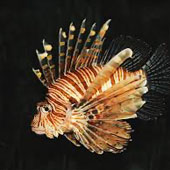
Devil Firefish
(Pterois miles)
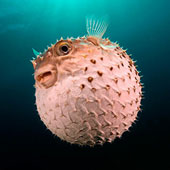
Silver-cheeked toadfish
(Lagocephalus Sceleratus)
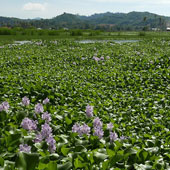
Water hyacinth
(Eichornia crassipes)
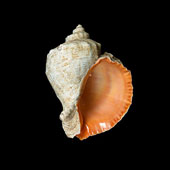
Veined Rapa Whelk
(Rapana venosa)
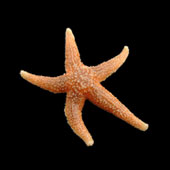
Common Starfish
(Asterias rubens)
Areas of Work of the Project
Marine Invasive Alien Species Project is implemented on the national and regional level of four different pilot areas as well. Pilot study areas cover Black Sea, Sea of Marmara, Aegean Sea and Mediterranean Sea
- İğneada Floodplain Forests National Park Coastal Seascape, Kırklareli
- Ayvalık Islands Natural Park, Balıkesir
- Marmara Islands, Balıkesir
- Samandağ, Hatay (Mediterranean Seal Habitat, Sea Turtle Nesting and Spawning Ground)
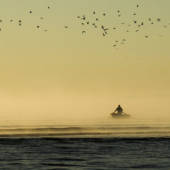
İĞNEADA FLOODPLAIN FORESTS
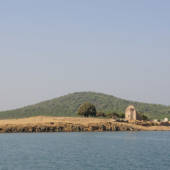
AYVALIK ISLANDS
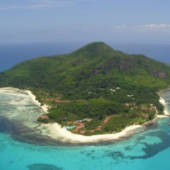
MARMARA ISLANDS
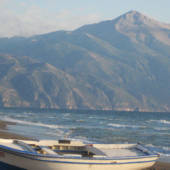
SAMANDAĞ
Implementing Agencies and Stakeholders of the Project
Marine Invasive Alien Species Project is implemented by the Ministry of Agriculture and Forestry in cooperation with the United Nations Development Programme (UNDP) funded by the Global Environment Facility (GEF).
The main stakeholders of the Project are central public institutions and provincial units, local governments, academia, NGOs, fishermen and local people. The main related institutions are the Ministry of Transport and Infrastructure, Ministry of Environment and Urbanization, Ministry of Health, Ministry of Culture and Tourism, Ministry of Trade, Coast Guard Command, Gendarmerie General Command.
Ministry of Transport and Infrastructure (MoTI)
MoTI is responsible for the organization, coordination and guidance of transport activities in Turkey. Since the administration of shipping routes and ballast waters falls under MoTI’s responsibilities, the ministry is one of the key stakeholders to take charge in the determination of alternative solutions and strategic options for ballast water and invasive alien species (IAS). The ministry as the national focal point for the Ballast Water Convention in Turkey coordinates the work undertaken by Turkey on the issues related to the Convention.
MoTI will provide technical support under Components 1 and 2, and be the beneficiary of the activities undertaken in the scope of ballast water management. MoTI will be a member of the Project Board. Under IAS project, the General Directorate of Maritime Affairs will be the focal point of the Ministry.
Ministry of Environment and Urbanization (MoEU)
MoEU is responsible for the protection and management of the environment and regulation of public works and urbanization activities. The ministry is the national focal point for UNFCCC in Turkey. Under the Project, the ministry will be responsible for protecting the marine environment against pollution. The General Directorate of Environmental Management within the ministry will support the activities concerning the design and implementation of quarantine measures and IAS protocols. The ministry will be one of the key stakeholders to take charge in the implementation of Components 1 and 2.
Ministry of Health (MoH)
MoH is responsible for the coordination of human health support services. First aid and treatment services for patients injured or poisoned by marine invasive alien species are in the ministry’s area of responsibility. Training and awareness activities on emergency treatment methods that will be used on patients injured/poisoned by IAS will be organized by MoH personnel who works in coastal regions of Turkey. The ministry will participate in the effective and safe implementation of the volunteer ranger program (Component 3) as well.
Ministry of Culture and Tourism (MoCT)
MoCT is responsible for the organization, coordination and guidance of tourism activities in Turkey. The management of activities such as diving, swimming, entertainment, etc. informing tourists, minimizing/managing the adverse effect of mass tourism on sensitive ecosystems fall in the responsibilities of MoCT. As stated in Component 2, the ministry will provide support and technical input on knowledge building and advocacy campaigns.
Ministry of Trade (MoT)
Customs administrations play a role in the introduction of IAS to the country from sectors such as hobby aquariums and aquaculture. The first checkpoints of the entrance of alien species to the country are usually customs administrations; therefore, the participation of these authorities is crucial for the Project. The Project will particularly emphasize capacity-building for customs personnel in combating IAS.
Coast Guard Command (CGG)
CGG is responsible for enforcing national and international law and ensuring the safety of life and property at sea in its remit. CGG will enhance the implementation of the Project within its duties and powers on the control of illicit activities such as illegal hunting. It will benefit from many of the training and capacity development activities planned under the Project.
Gendarmerie General Command
The Gendarmerie is the institution responsible for enforcing national and international law and safety of life and property at sea in its remit. In addition, there are teams in charge of biodiversity conservation in the Gendarmerie; therefore, it will benefit from many of the training and capacity development activities planned under the Project.